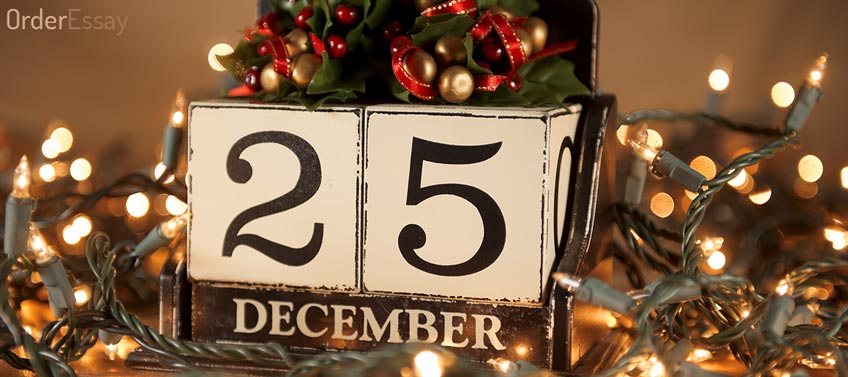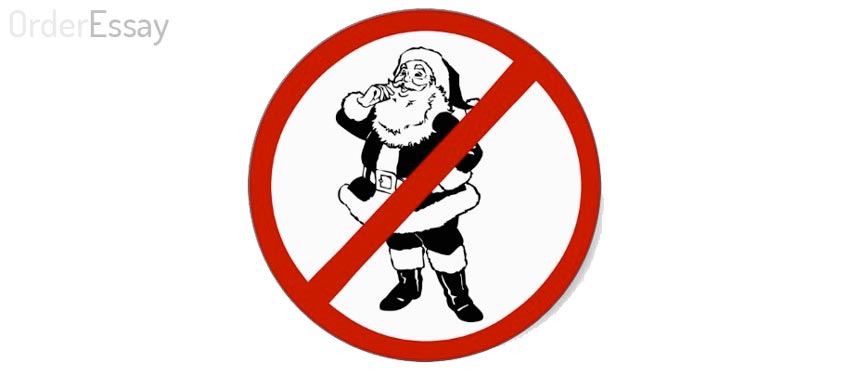
Just pronounce the word “Christmas” and you’ll suddenly smell tangerines or hear your favorite carol. Even if you somehow tend to agree with those rationalists who claim that this holiday has become too commercialized, I bet you still won’t deny that anticipating Christmas time does make you feel special.
By commemorating the birth of Jesus Christ, this centuries-old holiday has been also attributed many different meanings. What’s interesting about them, they are determined by the long history of humanity and cultural diversities within it.
When “it’s Christmas time all over the world”, as Sammy Davis Jr. sings in his immortal song, for a week or two various ancient traditions and beliefs assert their rights to define our life styles and aspirations. But paradoxically, at this very time we all appear to have quite a lot in common, regardless of our whereabouts.
We all wish for something better than we have at the moment. We try to be better to our dearest and nearest. We apologize and forgive. Even though some of us may disregard the religious facet of the holiday, it’s rather difficult to resist the magic atmosphere, reigning all around us at Christmas. The expectations of decorating a Christmas tree, getting a present, eating mom’s Christmas pudding come so naturally, even without all those ads. (But Coca-Cola is certainly a hit!) And we miraculously get absorbed by the festive bustle.
So, that’s quite a good start for your essay about Christmas, isn’t it? If you’d like to get more sound writing assistance, you’re welcome to check out our services here: orderessay.org/essay-help.
But today we’d like to throw out to you some compelling prompts for an excellent essay about Christmas. Catch amazing facts and check creative ideas from experienced writers. Bet you’ll even enjoy doing your home assignment this time!

Not the Whole Christian World Celebrates Christmas on December 25
The considerably bigger part of it does celebrate this holiday exactly on December 25. On the Ancient Roman calendar this day was the date of winter solstice, which adds even more symbolism to Christ’s birth.
So, Catholic, Protestant, and Baptist Churches stick to this date, marked in the modern Gregorian calendar. But Orthodox Churches in more than ten countries use the “old” Julian calendar to observe Christmas. The difference takes 13 days. So, for example, Georgians, Macedonians and Russians celebrate the holiday on January 7. Armenia celebrates Christmas on January 6.
Now, don’t you think that these facts happen to prove that Davis’ song is… wrong a bit? Just from the calendar point of view. Christmas is celebrated on different dates. Besides, only Christian culture features this holiday. So, “all over the world” is probably a metaphorical exaggeration.
Nonetheless, wherever we come from, we all like and want to feel what such festival as Christmas can bring – peace, warmth and hope.
There Is Nothing Irreligious in Your “Xmas”. And Here’s Why!
Feel free to use this kind of shortening in your messages to friends and letters to teachers. Of course, you can use it in your essay either, as an absolutely decent synonym of the word Christmas. Let’s first check where it comes from, and then we’ll see why “Xmas” is okay despite the fact that someone less erudite than you might not like it.
So, the modern “Christmas” is derived from the Old English “Cristesmæsse” (yes, with this strange letter). The word was first recorded in 1038. As you’ve probably guessed, it can be easily divided into two words, making a combination “Christ’s Mass”. Here a mass is likely to imply a church ceremony, but according to some hypothesis, the word “mass” is related to “mission”.
Alright, now you know the etymology of “Christmas” as it is. But what about “Xmas”?
Its inventors and users are usually blamed for trying to remove the religious sense, conveyed by the part “Christ-”, from the word, denoting the holiday. (If you’ve just thought that it sounds absurd, high five! It really does.) However, the letter X stands first in the Greek word for “Christ” and is even considered a formal abbreviation for His name. That’s it.
Learn more about the history of Xmas here.

For Some Time Christmas Celebrations Were Kind of Banned
Along with solemn rituals Christmas has always been a time of true fun. The English Puritans of the 17th century considered that the festival was wasteful and even encouraged immoral behavior despite all its holy meanings. That is why Parliament produced a special Directory for Public Worship, insisting that Christmas had to be celebrated in “respectful contemplation”.
Since 1653, when Oliver Cromwell became Lord Protector of the Commonwealth of England, Scotland and Ireland, it wasn’t allowed to attend Christmas church services. However, it would be unfair to say that Cromwell himself banned the festivities. There were some laws, formulated and advanced by Puritans, which restricted the large-scale celebrations because they contradicted traditional Cristian ideas of modesty and humility.
Obviously, Cromwell could support such regulations. But they remained in force mostly on paper than it real life. In 1660, when the Restoration began, all prohibitions were lifted.
In the 20th century the Soviet Union also banned religious Christmas observances. Such restrictions were an integral part of the totalitarian atheistic campaign of that time. But instead of this holiday, New Year’s Day was popularized. Till nowadays it’s widely celebrated in some of the former Soviet republics on December 31 and January 1.
Santa Claus Wasn’t “Red” Originally
What’s more, our favorite Christmas character originally had a different name. Sure, you know it! But it seems quite strange that today Santa’s namesake and, actually, predecessor is associated with a different holiday.
We mean Saint Nicholas. He is considered a real person, a bishop who lived somewhere in modern Turkey. He inherited a lot of money after his parents died, and spent it on helping the poor. Once Nicholas secretly dropped a bag of gold coins into a chimney of a poor man whose eldest daughter had no dowry to get married.
By the way, the legend says that the bag fell into a stocking, drying by the fire. That is probably where the tradition to put little gifts in stockings comes from.
Due to his kindness and generosity, Nicholas became treated as the patron saint of children, as well as of sailors, thieves, prisoners, and unmarried women. But how could he turn into a plump, beardy man, dressed in a brightly red suit and pulling a reindeer sleigh across the cold dark blue sky?
It’s highly likely that this popular character got his name after Dutch settlers brought their Sinterklaas to the USA. At first, he might have looked like a Cristian saint, but his appearance was considerably changed by one poem.
It belongs to Clement Clark Moore, a famous author and professor of the 19th century. Moore wrote the poem for a family celebration, portraying a pudgy sleigh driver, who was a Dutch, as Santa. Professor couldn’t foresee that his character had been destined to become an embodiment of modern Christmas.
In the 19th century Thomas Nast, a well-known cartoonist and caricaturist, put the very final touch to the modern Santa’s image by dressing him in a red suit. And in 1931 the Coca-Cola company commissioned the picture.
That’s all for today. Whenever you’re reading this post, our team wish you Merry Christmas! And a high grade for your essay!

